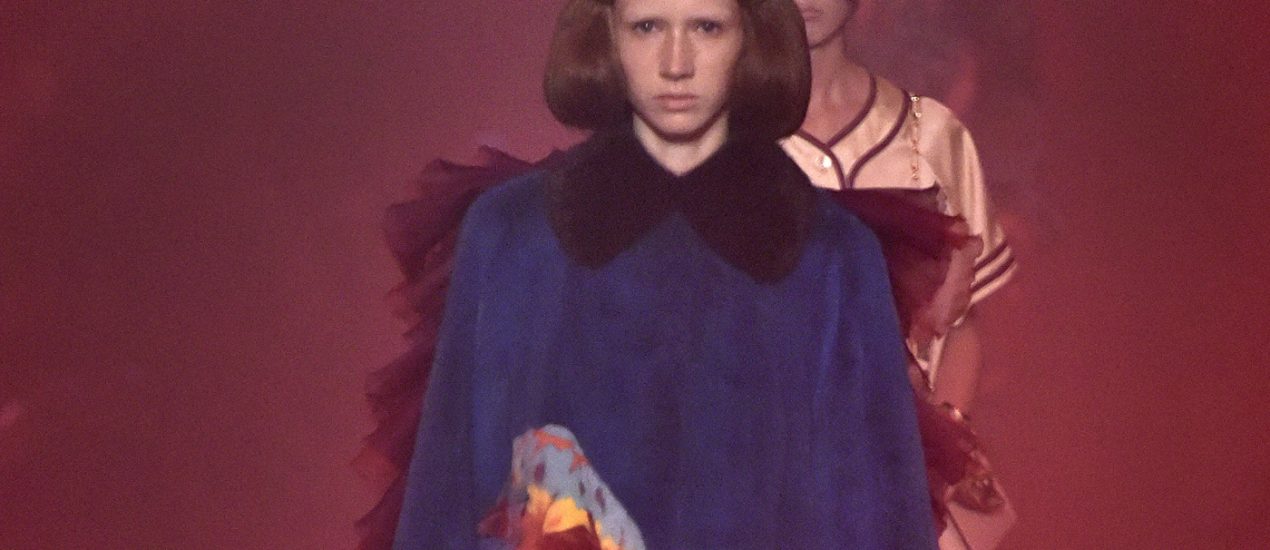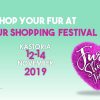
And the same is true for fur – 70% of AW collections included fur/shearling – where designers are tearing up the rule book and pushing fur to its limits They’re producing gorgeous colours, mixing fur with different textiles such as leather, suede and lace and demonstrating intricate techniques that take your breath away, such is their beauty.
And rising global sales figures show that shoppers are buying into fur in ever increasing numbers. This in turn means that retailers are stocking a wide range of styles, from investment pieces that can be passed from generation to generation to cool, street-style accessories such as scarves, hats and pompoms that act as an entry point and help grow a love and appreciation of fur that can last a lifetime.
Retailers who introduce fur into their stores or grow their ranges realise that it makes for great business and brings in new consumers who can turn into regular visitors. Johannes Manakas the chairman of the IFF, the global trade body for the fur industry, is a man who should know: “Any retailer thinking about what to stock this season should consider fur. It’s on-trend and brings a wide range of price points from trim to full garments into your collection.”
Destination Unknown
Fur appeared on the AW runways in brilliant, lavish variety, from the timeless pieces of Hermes and Michael Kors through to the anti-establishment excitement of ‘New Gucci’ under the creative direction of Alessandro Michele and Vetements founder and fashion innovator, Demna Gvasalia for Balenciaga.
Dramatic collars and cuffs in a range of styles and colours caught our eye, bringing drama and glamour to a classic tweed suit jacket or souped up opulence to a fur coat. And fur cuffs on eye-catching day dresses bring fur firmly indoors.
The casual streetwear look remains a key trend. There are cute fur bomber jackets in jewel-coloured tones and oversized denim jackets lined with cosy fur. And the aviator jacket continues to be popular, lined with shearling or fur. Even classic mink has been reborn – we’ve seen relaxed, deconstructed zip-up mink coats making their way down the runway in sumptuous tones with a casual elegance that makes them so easy to wear.
The colourful scarf or shrug has become a firm fashion favourite – beautiful sherbet tones contrast with dark hues and work well to add a light-hearted touch to a classic outfit.
We also saw some stunning craftsmanship including patchwork effects created by mixing different fur types and textures as well as quirky floral designs achieved by clever dyeing, appliqué, embroidery, cut outs and inserts.
As if this wasn’t enough to tempt you to go out and grab a new fur item on your next shopping trip, we’ll leave the last word to Mark Oaten, the CEO of the IFF who says:
“Fur has never been more popular with designers and as new techniques develop and new customers fall in love with fur I expect the next five years to be full of growth.”
– Businessoffur.com
Destination Unknown
Internet technology such as online retailers and social media platforms have given way for trends to be identified, marketed and sold immediately. Styles and trends are easily conveyed online to attract the trendsetters. Posts on Instagram or Facebook can easily increase awareness about new trends in fashion which can create high demand for specific items or brands, new “buy now button” technology can link these styles with direct sales.
Machine vision technology has been developed to track how fashions spread through society. The industry can now see the direct correlation on how fashion shows influence street-chic outfits. The effects can now be quantified and provide valuable feedback to fashion houses, designers and consumers regarding trends.
Military technology has played an important role in the fashion industry. The camouflage pattern in clothing was developed to help military personal be less visible to enemy forces. A trend emerged in the 1960s and camouflage fabric was introduced to street wear. The camouflage fabric trend disappeared and resurfaced several times since then. Camouflage started to appear in high fashion by the 1990s. Designers such as Valentino, Dior and Dolce & Gabbana combined camouflage into their runway and ready-to-wear collections.
As we undergo a global economic downturn, the “Spend now, think later” belief is getting less relevant in our society. Today’s consumer tends to be more mindful about consumption, looking for just enough and better, more durable options. People have also become more conscious of the impact their everyday consumption has on the environment and society. They’re looking for ways to mediate their material desires with an aim to do more good in the world. A linear economy is slowly shifting to a circular one.
Consumption as a share of gross domestic product in China has fallen for six decades, from 76 percent in 1952 to 28 percent in 2011. China plans to reduce tariffs on a number of consumer goods and expand its 72-hour transit visa plan to more cities in an effort to stimulate domestic consumption.





